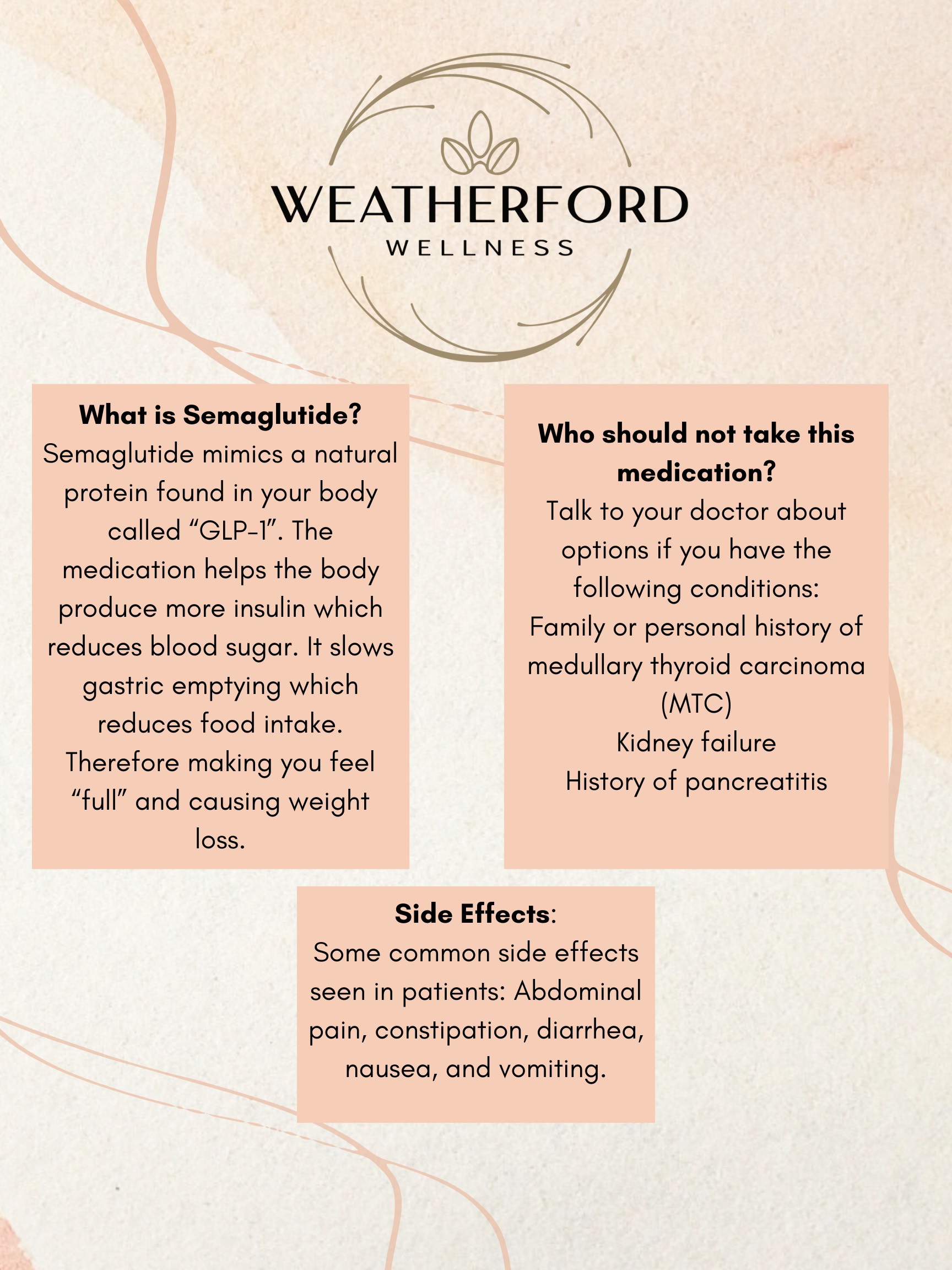Semaglutide is a medication used for the treatment of type 2 diabetes and obesity. It is a glucagon-like peptide-1 (GLP-1) receptor agonist that helps lower blood sugar levels and promote weight loss by enhancing insulin secretion, slowing gastric emptying, and reducing appetite.

Starting Dose:
0.25 mg once weekly for the first 4 weeks.
Dose Escalation:
Increase to 0.5 mg once weekly for 4 weeks, then 1 mg once weekly for 4 or 8 weeks, followed by 1.7 mg once weekly for 4 weeks. Finally, the maximum maintenance dose should not exceed 2.4 mg once weekly.
Maintenance Dose:
The maintenance dose will vary depending on the patient’s response to the medication and any side effects experienced. The maximum recommended dose is 2.4 mg once weekly.
Administration:
The injectable form is administered subcutaneously in the abdomen, thigh, or upper arm. It is important to rotate the injection sites to avoid lipodystrophy.

Side Effects:
Common side effects include nausea, vomiting, diarrhea, constipation, and abdominal pain. These are usually more pronounced at the beginning of treatment and tend to decrease over time.
Monitoring:
Regular monitoring of blood glucose levels, kidney function, and other relevant parameters is recommended to ensure the medication is effective and safe.
Contraindications:
Semaglutide is not recommended for individuals with a personal or family history of medullary thyroid carcinoma (MTC) or those with Multiple Endocrine Neoplasia syndrome type 2 (MEN 2).
Nicotinamide Adenine Dinucleotide (NAD):
Interacts with various enzymes to coordinate DNA repair, gene expression, stress response, and energy metabolism.
Improve glucose tolerance and lipid metabolism.
Encourage higher levels of energy expenditure and physical activity, while suppressing age-related weight gain.
Declining NAD+ levels are closely related to the development of various metabolic disorders, including fatty liver disease and diabetes. When added to Semaglutide as an adjuvant ingredient, may help jumpstart weight loss process as NAD+ levels decrease under disturbed nutrient conditions, such as obesity.
As always, it is essential to follow the healthcare provider’s guidance for dosing and administration, as individual needs and responses to treatment can vary.
References: Facts and comparison Semaglutide and NAD+ /injections Pyridoxine – ResearchGate and PubChem & /PubMed – NCBI J Diabetes Investig. 2020 Nov; 11(6): 1403–1419. Published online 2020 Jul 7. doi: 10.1111/jdi.13303
